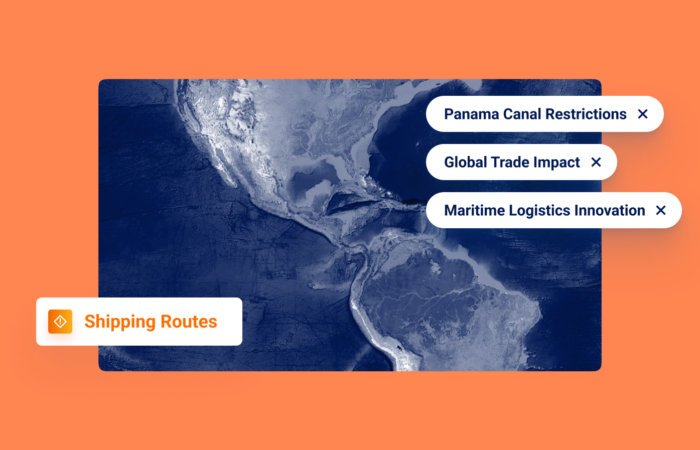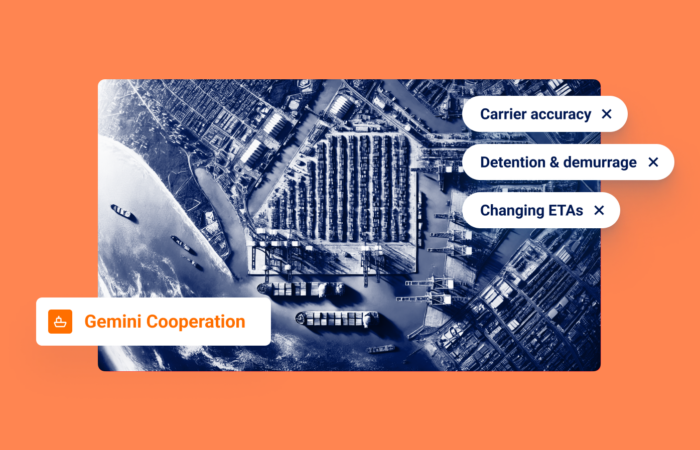Experts Predict Red Sea Avoidance Ripples, Impacting Global Trade Soon

What’s inside?
What will be the duration of the current Red Sea crisis and its impact on global trade and freedom of navigation? No one has the definitive answers to this highly fluid and evolving situation, but we can make some educated predictions based on the past.
With the announcement of the launch of Operation Prosperity Guardian and other potential initiatives, there are grounds for some hope.
Five days after the first severe attack on a container vessel, however, we see most non-Chinese container vessel operators diverting vessels around the Cape of Good Hope. Sailing around the Cape will likely add 10-14 days of travel time, as explained in Windward’s previous blog post.

The route deviations differ from actions taken during the last Suez Canal blockage back in 2021. Vessel operators waited longer before deciding to deviate and they reversed the decision once the canal reopened.
When the canal was blocked, the world intensely followed the saga of the Ever Given vessel, which got stuck and was then refloated, and subsequent normalization of shipping flows. But despite the relatively short period of blockage, global supply chains felt the effects for many months after reopening.
Unlike a canal blockage, Houthi rebel attacks are not something for which we can expect a quick solution. There is not any one specific action or event that can quickly re-establish the known order. Geopolitical challenges threaten the safety of crews, cargoes and vessels. It will take time to rebuild trust that the route through the Bab-el-Mandeb is truly safe and unclogged.
Immediate Impact
Here are some direct consequences of major carriers pulling out of the Red Sea:
- An obvious and immediate effect on vessels and cargo currently in, or bound for, the Suez Canal/Red Sea – will they reroute or continue?
- Higher insurance premiums for vessels and cargo
- Longer transit times for all routes that otherwise transit the Suez Canal
- Higher freight rates due to the increased operational costs
- Higher freight rates due to a reduction in available vessel capacity (Asia to Europe transit normally taking 40 days now will take +50 days – 25% extra vessel and container capacity is needed to handle the same volume)
- Container carriers are starting to invoke Bill of Lading (BL) clause 10, as noted by container shipping expert Lars Jensen, effectively enabling carriers to push added costs of existing shipments onto cargo owners
- Port and hinterland infrastructure pressures from vessels and cargo arriving far outside of normal schedules
- CO2 footprint increase per shipment
It may be easy to think of this as an Asia-Europe challenge, but in a very short time it will become a major issue for North America as well. We will likely see renewed West Coast U.S. capacity pressures (terminals, rail, truck, and warehousing) during the scramble to redesign supply chains to avoid the Suez Canal.
For every week of deviations occurring, the time to restabilize the global vessel network grows exponentially. The ripple effects of delays last long term.
A liner vessel in the Asia-Europe trade route typically has a three-month round-trip cycle. Multiple late-arriving vessels will compete for constrained port and berth capacity, leading to further problems. These effects will lead to increased uncertainty around foreseeable transit time of shipments – even those not yet started, or even booked.
Trading Parties’ Historical Reaction to Supply Chain Disruption
Historically, we see a cycle of events set in motion by shipping parties’ initial beliefs and reactions:
- Supply chains are redesigned to cope with the new environment
- Perceived (in some cases real) inventory shortages lead to shipping parties increasing buffer stock over time
- Traders change their sourcing patterns to have more options and be less restricted by transits in the current corridor
These consequences will become more severe the longer it takes to regain confidence in the Red Sea and Suez Canal routes. All of this will not be vessel-type specific – it is already impacting bulkers, tankers, gas carriers, container vessels, and other vessels.
Christmas/holiday deliveries have been completed and we are entering a typically slower period from a consumption standpoint. But the Chinese New Year is around the corner and we already note that carriers are announcing peak season surcharges, revealing their expectations as to the impact of the Red Sea situation.
What Will 2024 Bring?
We have witnessed increasing shipping schedule reliability from container vessels and a normalization of throughput pressures in ports across the globe in 2023. This has brought the cost of operating supply chains down – not just through lower freight rates, but also via lower unplanned costs arising from unplanned delays, last minute replanned inland moves, and many other types of costs associated with uncertainty.
The situation in the Bab-el-Mandeb has the potential to flip the above paradigm. Not just into the month of January, but long into 2024. This is not meant to paint a gloom-and-doom picture – global trade will eventually prevail. But it is meant to alert you to the very real potential consequences facing global trade, so you can prepare and stay ahead.
How Windward Can Be Part of Your Solution
Supply chain predictability normalization in 2023 (following COVID 19) tempered shipping parties’ appetite for investing in visibility-only technologies. Companies have been looking at ROI for such investments through a lens of immediate saving opportunities.
This appetite may be regained in an attempt to preempt the high potential cost increases caused by the Red Sea shutdown.
At Windward, our supply chain focus and innovation goes well beyond mere visibility and predicting ocean movements. Our focus is on enabling customers to reduce unplanned spend through exception management and trade automation.
Windward’s Maritime AI™ platform already offers a Route Deviation feature to show which vessels are pivoting away from the Red Sea area.

Early detection is also going to be critical during such a fluid, fast-moving geopolitical quagmire. Without sufficient lead time, you may know what is happening, but you are not agile or flexible enough to react in time or strategically.
Windward’s platform flagged an increase in first-time visits by a small number of cargo vessels to Pakistan’s territorial waters – an area that is right outside the Bab-el Mandeb strait. This is an initial behavioral anomaly that may be related to the situation in the Red Sea. We’ll keep monitoring the situation and keep you updated…












